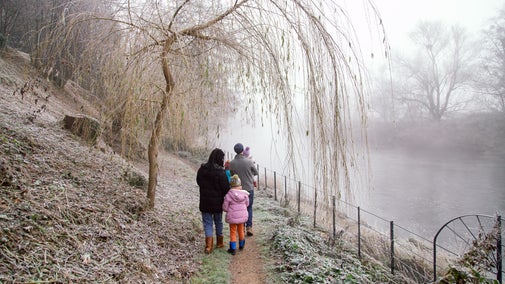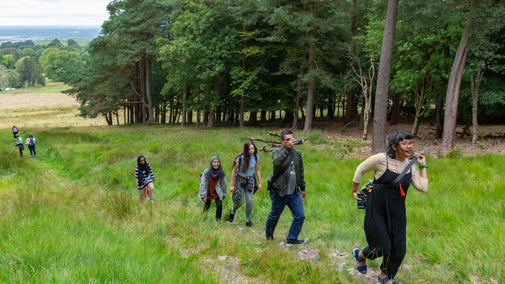Exploring the Chiltern Escarpment
Oxfordshire, Buckinghamshire & Berkshire
This 10-mile (16km) walk takes in panoramic views across the Chiltern Escarpment and the Aylesbury Vale. It passes through historical and archaeological sites, as well as the pretty 'chocolate box' village of Ellesborough, and with views of the Prime Minister's country retreat at Chequers. The walk includes important ecological habitats, ranging from rare chalk grassland to archetypal Chiltern beech woodlands, and the largest remaining area of natural box woodland in Britain.
Near to
Chilterns CountrysideStart point
Coombe Hill car park, grid ref: SP 851062Trail information
Maps
We strongly recommend using the local 1:25000 Ordnance Survey map (Explorer 181) in addition to these instructions.
More near here
Coombe Hill and Chequers trail
Enjoy a moderately energetic circular walk from Coombe Hill, taking in views across the Aylesbury Vale. You'll wander through woodlands, past rare chalk grassland and the pretty village of Ellesborough.

Hambleden Mill to Henley-on-Thames circular river walk
This circular Thames walk takes in a historic watermill, the Henley Regatta course, views across the Thames Valley and quiet stretches of river with the chance to spot wildlife.

Coombe Hill Woodland Walk
Follow this gentle circular trail in the Chilterns through beech woodland to the top of Coombe Hill, with far-reaching views from its summit.

Watlington Hill short walk
This walk offers memorable views over the Vale of Oxford and Chiltern Escarpment, as well as abundant wildlife and birdlife amongst the site's chalk grassland and woodland habitats.

Get in touch
Chilterns Countryside, c/o Hughenden estate, High Wycombe, Buckinghamshire, HP14 4LA
Our partners

We’ve partnered with Cotswold Outdoor to help everyone make the most of their time outdoors in the places we care for.
You might also be interested in
Walking in Oxfordshire, Buckinghamshire and Berkshire
From gentle strolls for little legs to longer hikes through the rolling Chiltern hills, these are some of the best walks in Oxfordshire, Buckinghamshire and Berkshire.

Walking
Explore some of the finest landscapes in our care on coastal paths, accessible trails, woodland walks and everything in between. Find the best places to walk near you.

Visiting Coombe Hill in the Chilterns Countryside
Explore the walking trails, play area and wildlife of Coombe Hill, the highest point in the Chiltern Hills.

Things to see at Pulpit Hill Iron Age fort in the Chilterns Countryside
Explore the ancient remains of a hidden Iron Age hillfort in this atmospheric woodland.

Follow the Countryside Code
Help to look after National Trust places by observing a few simple guidelines during your visit and following the Countryside Code.

Staying safe at National Trust places
The special places in National Trust care sometimes come with a few risks for visitors, be it coastline or countryside. Find out how to keep safe throughout your visits.

Cotswold Outdoor: our exclusive walking partner
Learn about the National Trust’s ongoing partnership with Cotswold Outdoor. Find out how they help us care for precious places and the exclusive discount available for National Trust supporters.





